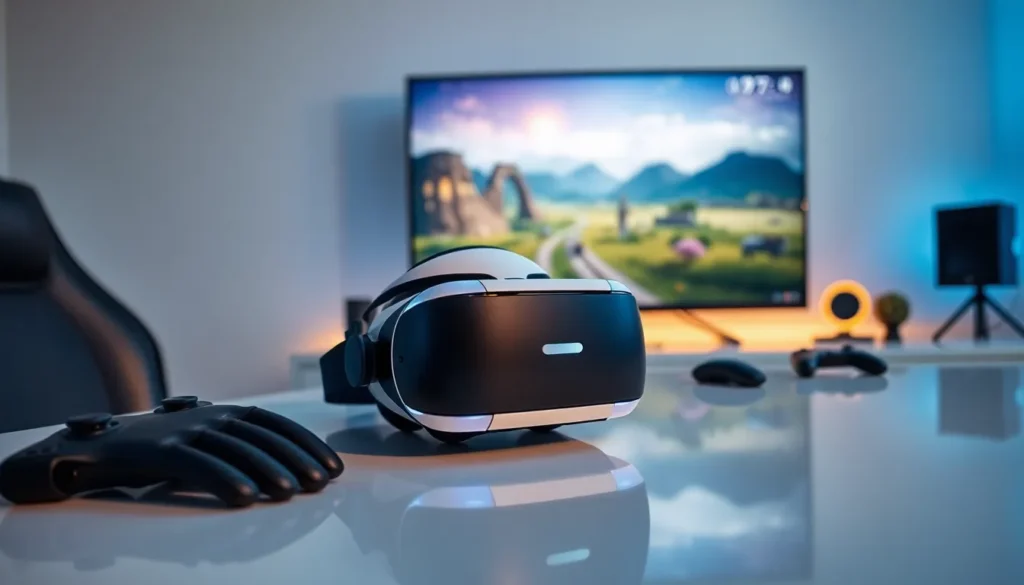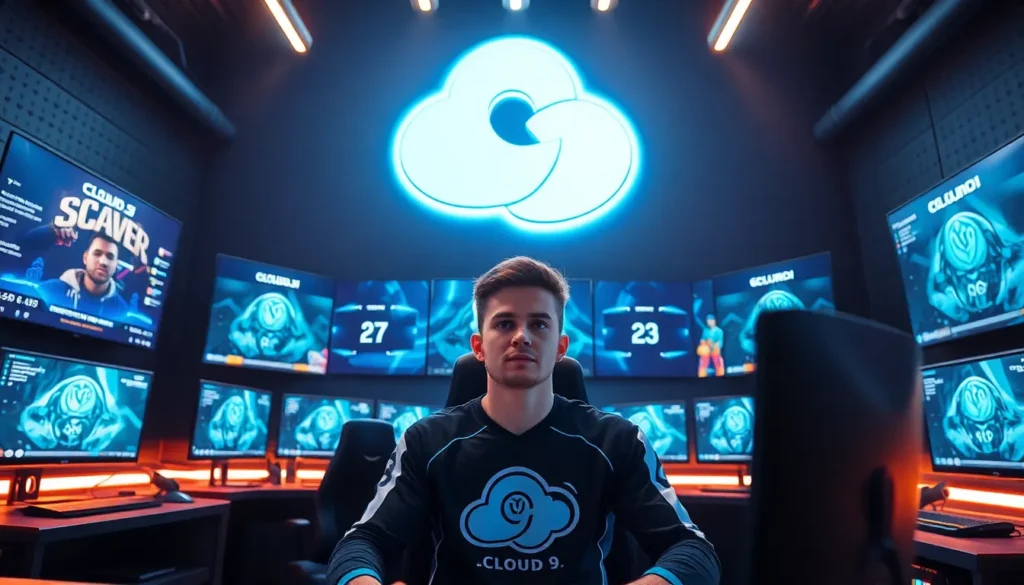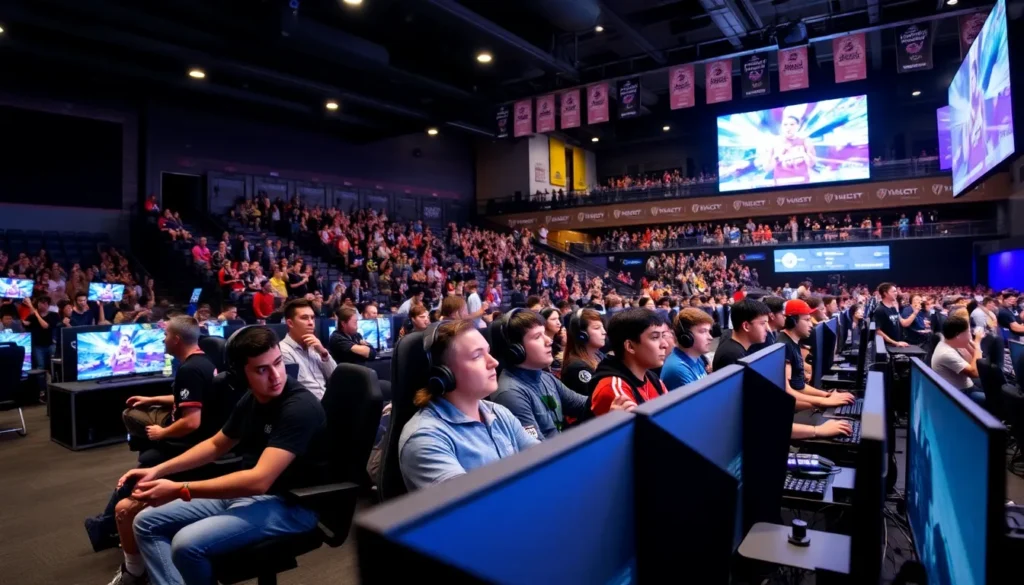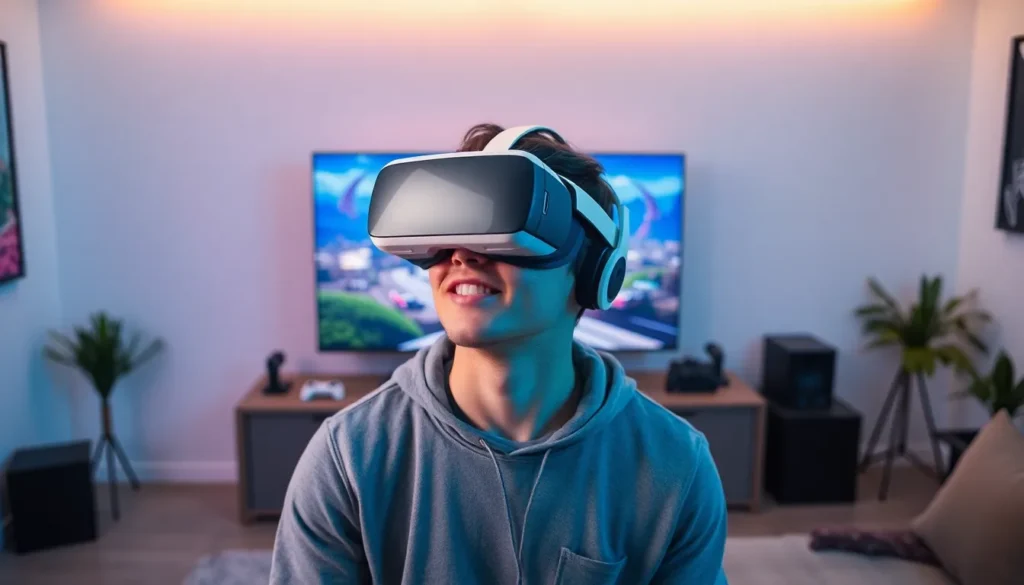Table of Contents
ToggleTired of the same old gaming experience? Welcome to the world where reality bends, and virtual adventures await. VR gaming isn’t just a passing fad: it’s rapidly evolving and reshaping how players interact with their games. Immerse as we explore the current trends revolutionizing the landscape of virtual reality gaming, a world so immersive you might forget to eat your snacks.
The Evolution of VR Gaming
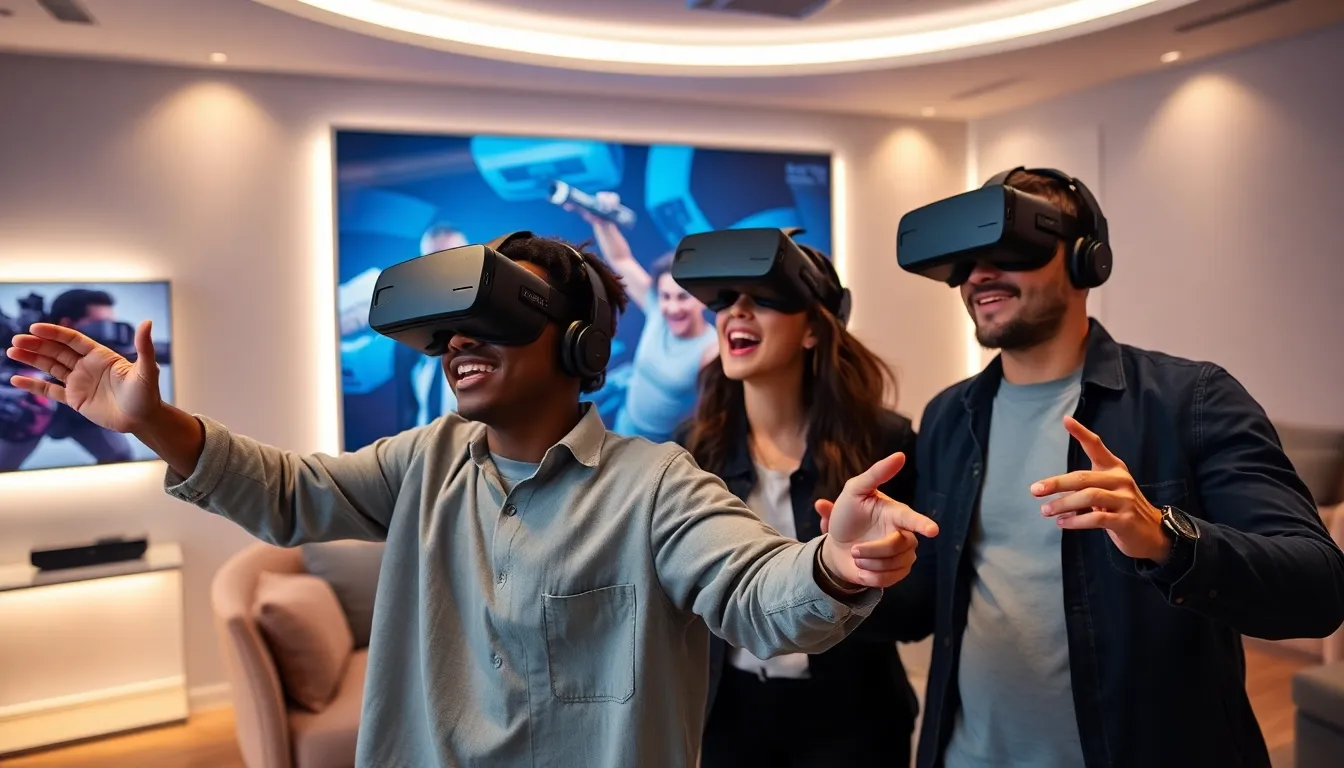
Once upon a time, virtual reality was merely a dream, just a spark of sci-fi imagination. Fast forward to today, and that spark has ignited a full-blown inferno of innovation. Initially hitting the scene in the 1990s, VR technology was clunky and limited, often more painful than pleasurable. With headsets like the Sega VR and Nintendo’s Virtual Boy, gamers got a taste of what could be, even if it was a bit rough around the edges.
But, in recent years, VR has taken a monumental leap forward. With advancements in graphics technology, motion tracking, and more user-friendly headsets, the gaming experience transformed into something extraordinarily immersive. Devices like the Oculus Rift and HTC Vive paved the way for mainstream adoption, upending traditional gaming models. Today, VR is not just a novelty. It’s a legitimate gaming platform, cherished by developers and players alike.
Latest Technological Advancements
Innovation never sleeps, especially in the realm of VR gaming. Recent technological advancements have pushed the boundaries of what players can experience. We’re talking about improvements in display technology that deliver stunning visuals and low-latency performance.
Next-gen headsets like the Valve Index offer refresh rates that reduce motion sickness and enhance gameplay. Also, eye-tracking technology is becoming more sophisticated, making interactions more seamless than ever. Imagine being able to control elements just by looking at them. Isn’t that the stuff of dreams?
Also, haptic feedback technology is evolving. Players can feel the recoil of a weapon or the breeze from a virtual explosion, adding layers of realism that were previously unimaginable. With all these advances, developers are now spotlighting more ambitious projects, pushing the envelope even further.
Key Trends Shaping the VR Gaming Landscape
As the VR gaming landscape continues to evolve, several key trends are becoming increasingly prominent. First, cross-platform integration is skyrocketing in popularity. Gamers want the ability to jump from one device to another without missing a beat. This has sparked a surge in games that interact seamlessly across different platforms, creating a more collective gaming community.
Next up, single-player experiences are on the decline. VR developers are recognizing that social interaction enhances immersion. Multiplayer and co-op modes are becoming the norm, allowing friends to share their virtual experiences together, even if they’re worlds apart.
Finally, the rise of indie developers is redefining traditional gaming narratives. Smaller studios are harnessing VR’s capabilities to craft unique stories and experiences, providing fresh perspectives often lacking in mainstream titles.
Impact of VR on Game Design and Development
Game design isn’t what it used to be. The advent of VR has revolutionized the way developers create games. The design process now emphasizes immersion and interactivity, rather than just graphics and mechanics. VR encourages designers to rethink traditional gameplay loops, requiring fresh and innovative ideas.
For instance, instead of controlling a character from a distant viewpoint, players now inhabit the character’s body, viewing the environment from a first-person perspective. This shift necessitates new design principles, making player experience a core focus.
Also, VR allows for intuitive controls. Developers are experimenting with motion recognition and gestures, moving away from traditional controllers. Players can now physically interact with their gaming environment, opening up vast possibilities for game design.
The Role of Social Interaction in VR Games
Social interaction is one of the compelling elements making VR gaming shine. Unlike traditional games, which often leave players solitary, VR has bridged gaps, enabling real-time interaction. Imagine exploring fantastical worlds not alone, but alongside friends, even if they’re half a world away.
Virtual reality platforms are creating spaces where players can congregate, chat, and collaborate on missions. Also, developers are emphasizing team-based gameplay, leading to a rise in cooperative structures. This creates a richer narrative and encourages players to work together, experiencing adventures that strengthen their friendships. Everyone loves a good laugh over a virtual battle, after all.
Future Forecast: What’s Next for VR Gaming?
What does the future hold for VR gaming? Well, predictions abound, but two trends stand out. First, the potential for augmented reality (AR) to merge with VR is increasingly becoming a hot topic. Think Pokémon GO but in an entirely immersive environment. Gamers could potentially explore their real world while interacting with virtual elements, talk about game-changing.
Second, as hardware becomes more affordable, we may see wider adoption of VR technology. Imagine a future where VR headsets are as common as gaming consoles. This shift would not only expand the gaming audience but also lead to more content geared towards these platforms. Developers will have a larger canvas to create innovative experiences, possibly integrating AI to personalize gameplay.

